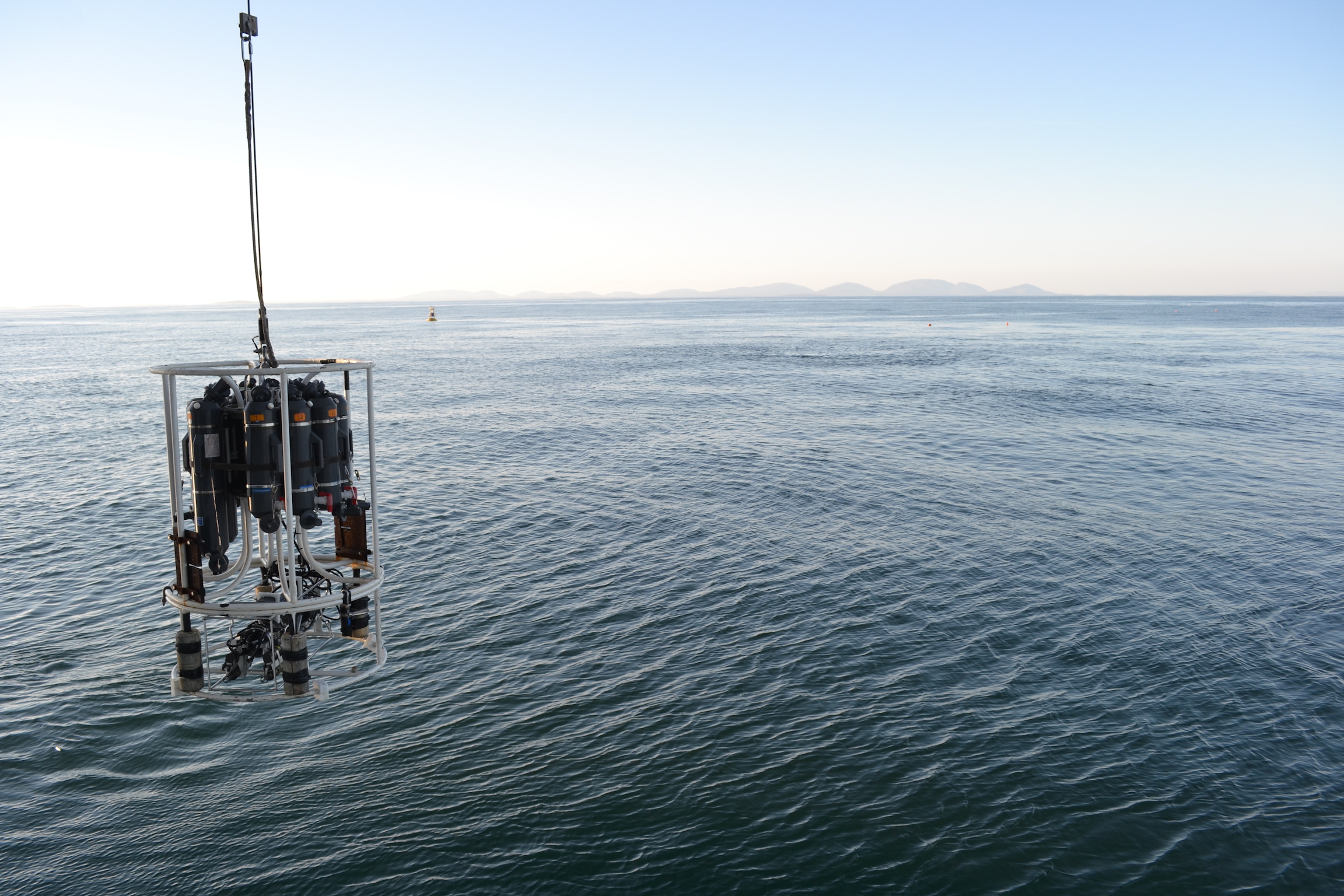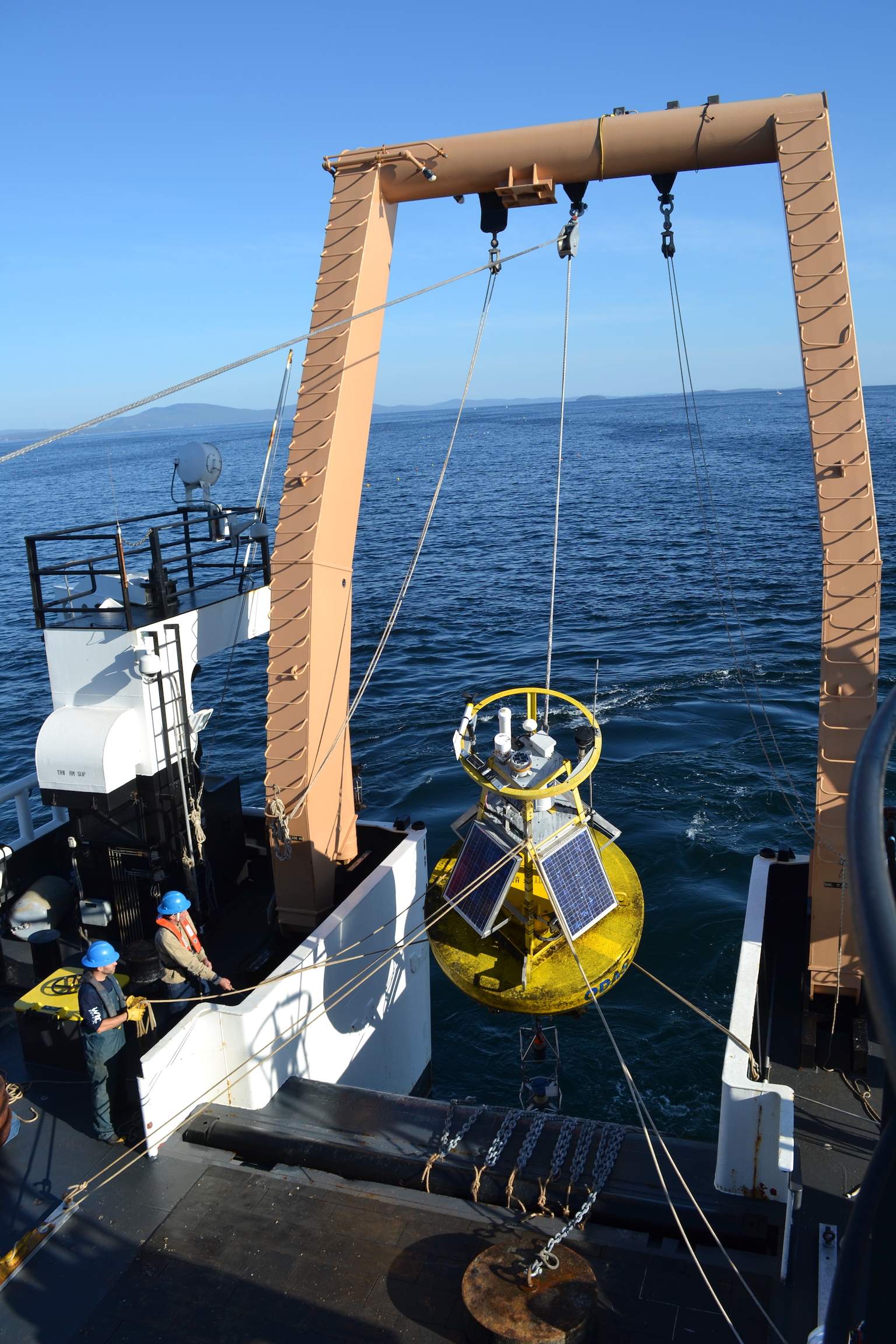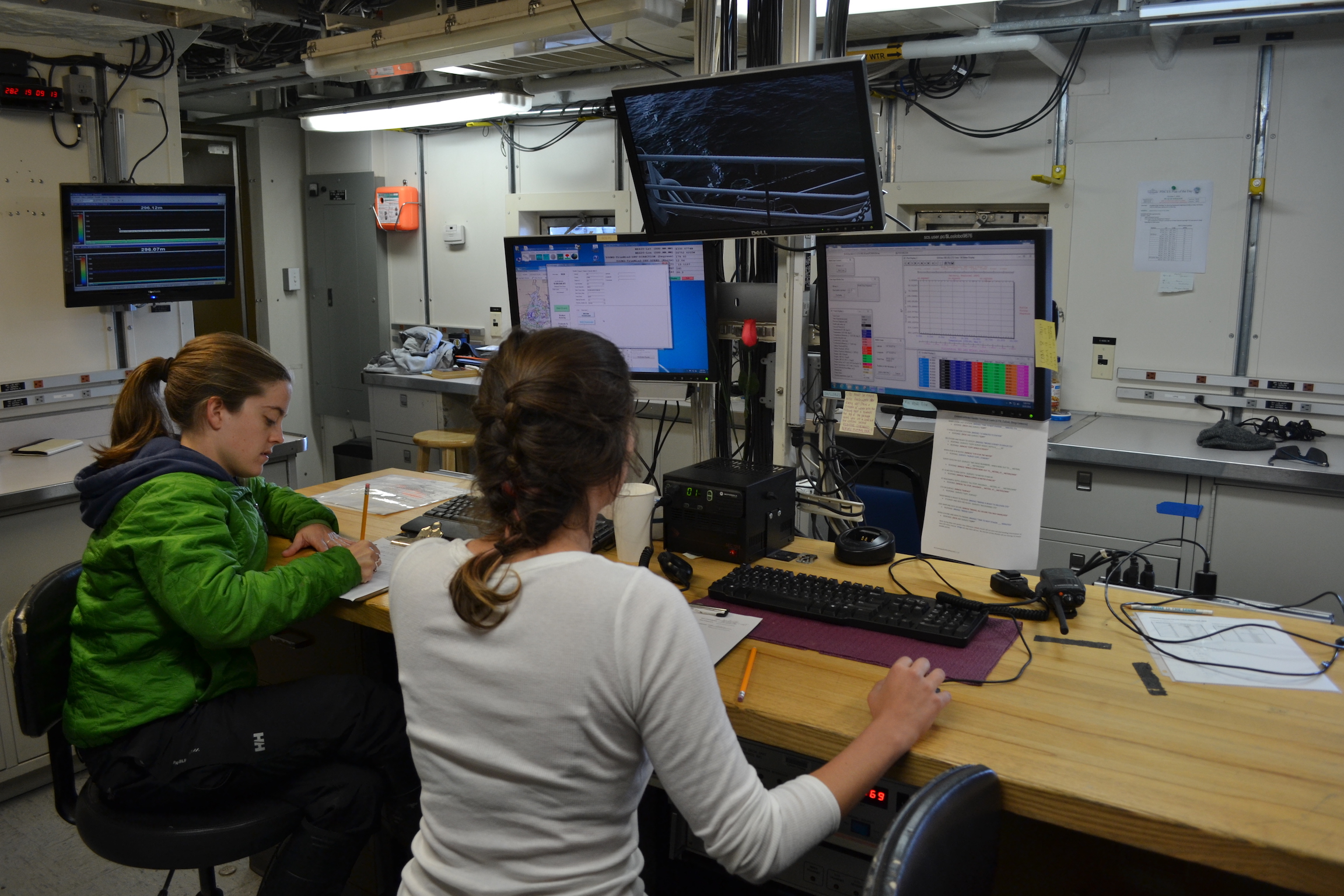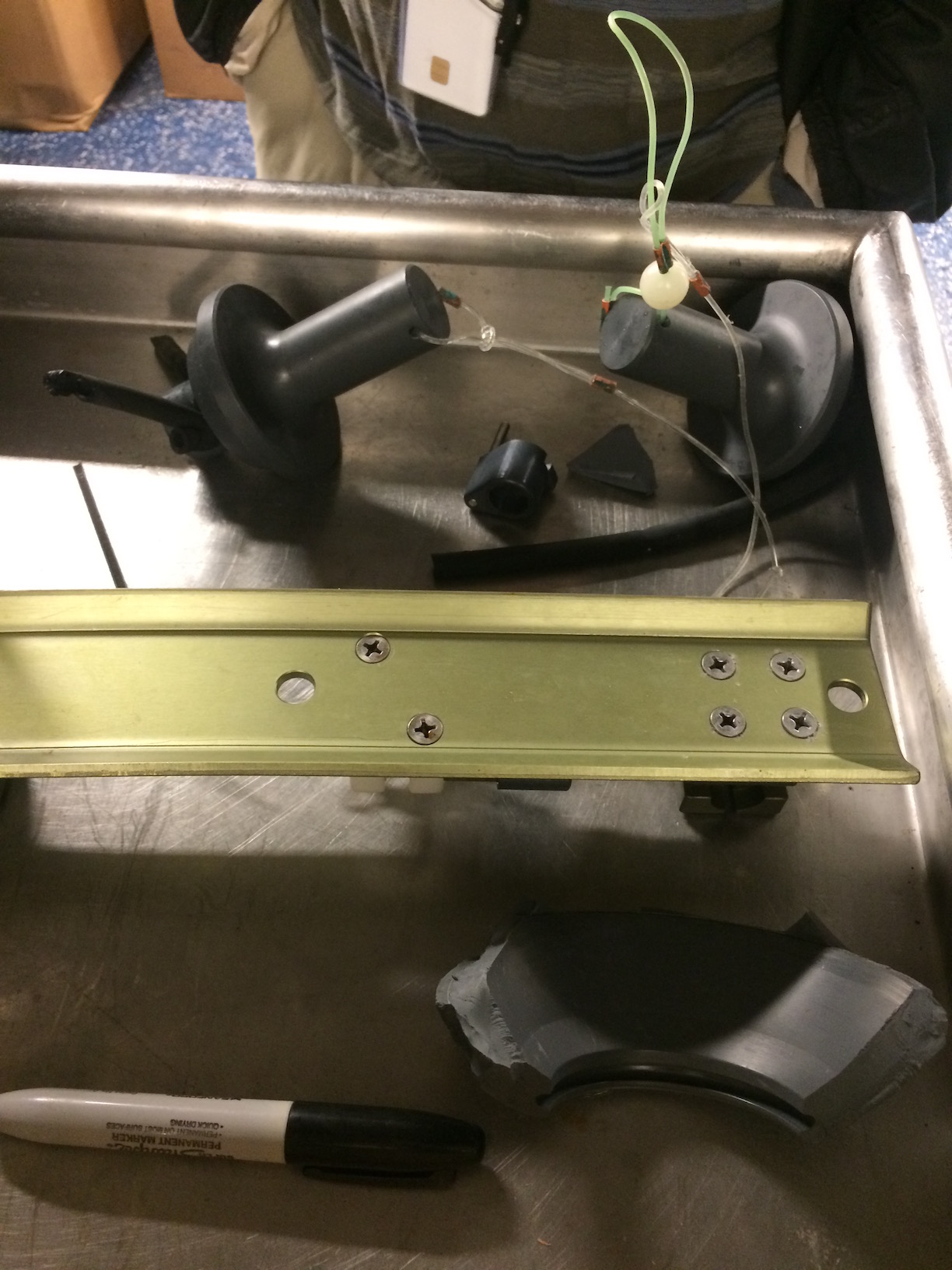The sun sets over the Gulf of Maine and the Pisces
An update from Nina Whitney on the NOAA R/V Pisces:
Hello from somewhere in the stormy Gulf of Maine. Having been lucky to have gorgeous weather the last couple of days, our luck has run out. Seas are just a bit choppy now but the remains of Matthew are headed our way so we are setting our sights on Bar Harbor, Maine to find shelter and wait out the 12-20 foot seas and 30-50 knot winds that are predicted. Fortunately, we have successfully deployed and recovered all of the buoys planned for this trip so the weather is just altering our plans for CTD casts.

The CTD with Buoy I and Acadia National Park in the background.
On day 4, Buoy F was successfully redeployed in Penobscot Bay. We then made our way east, up the coast, past Acadia National Park and briefly into Canadian waters, before turning southwest and heading back to Jordan Basin, one of the deepest areas in the Gulf of Maine. There we successfully recovered and redeployed Buoy M, the deepest buoy at 285 meters (935 feet) to the ocean floor that the University of Maine Physical Oceanography Group operates. This buoy is particularly exciting as there are now nitrate sensors at multiple depths attached to the buoy cable so Dr. Dave Townsend and other biological oceanographers at the University of Maine can receive real-time nutrient profiles with depth at this location. We then headed back to Buoy I, off the coast of Acadia National Park, which we recovered and redeployed today.

Deploying Buoy F
During our journey to Jordan Basin we deployed several drifters, which are set up to record and relay ocean current data from about 15 meters depth. These drifters will drift around with the currents in the Gulf of Maine for the next year or more, assuming no fishermen pick them up!
And of course throughout our meanderings around the Gulf of Maine, we have been taking CTD casts. Probably the most exciting, although unfortunate, of these came at about 2 am this morning when my brain called it quits for the night and I managed to cause an underwater explosion. It turns out that if you do not leave the Niskin bottles (the bottles on the CTD that we use to collect water) open when lowering the CTD to several hundred meters depth, they will explode from the change in pressure. Of course, this makes sense in hindsight and is something I should have thought of but my brain decided to go back to sleep at some point during my night shift. Fortunately, it exploded at depth so no one was injured! All that remained of the bottle was a piece of the rim of the bottle and the caps, both of which got hung up on the CTD itself. Although a very unfortunate mistake, it was pretty impressive scientifically. Those bottles are not made of thin or cheap plastic! In any event, lesson learned. Let’s just say I won’t be doing that again anytime soon.

Megan Switzer (right) and Nina manning the CTD during one of the casts.

All that remains of the exploded Niskin bottle
The next plan of attack is less clear and dependent on the weather but we are still hoping to get out to Georges Basin, the third of the three deep basins in the Gulf of Maine and possibly also the Northeast Channel, which is where most of the deep water in the Gulf of Maine enters through. We’ll see what Mother Nature decides to throw at us!
